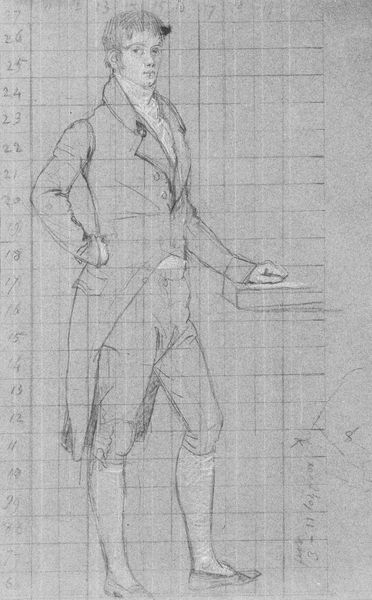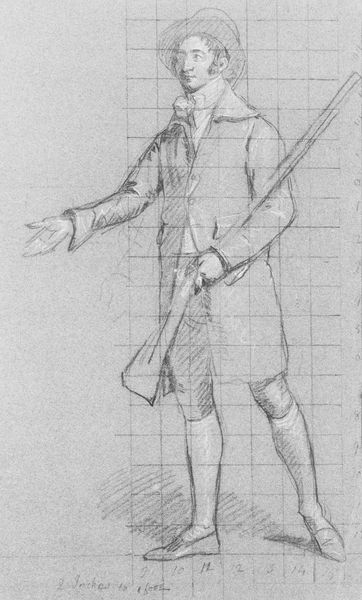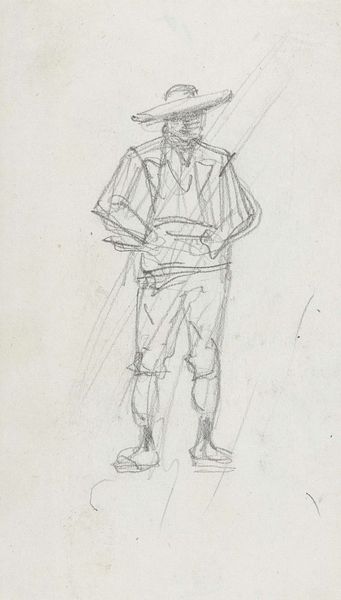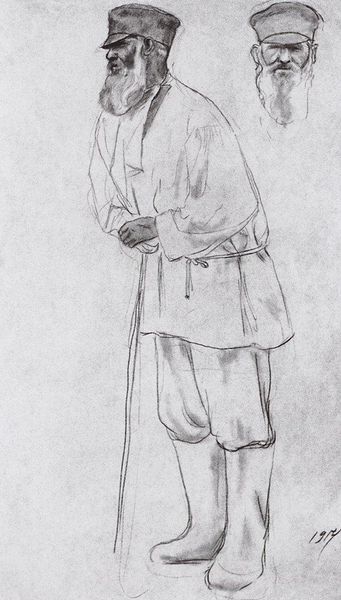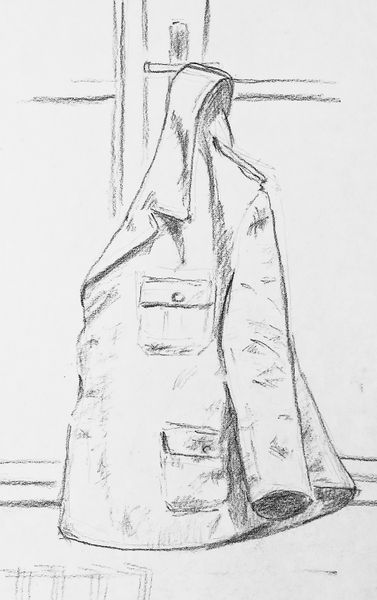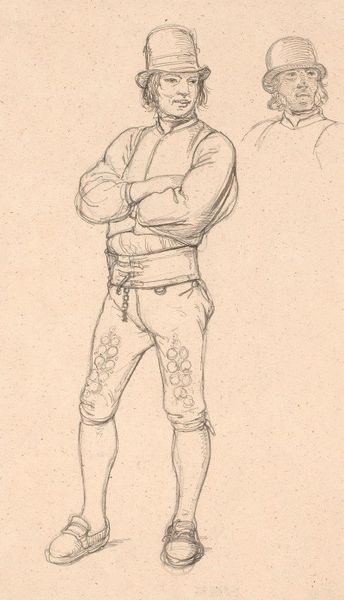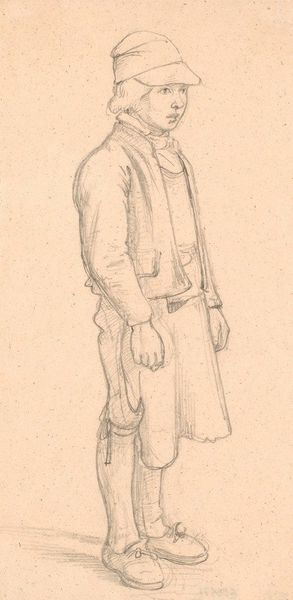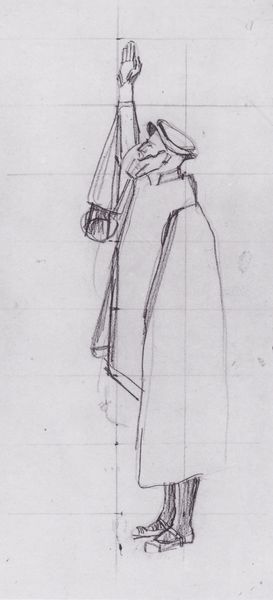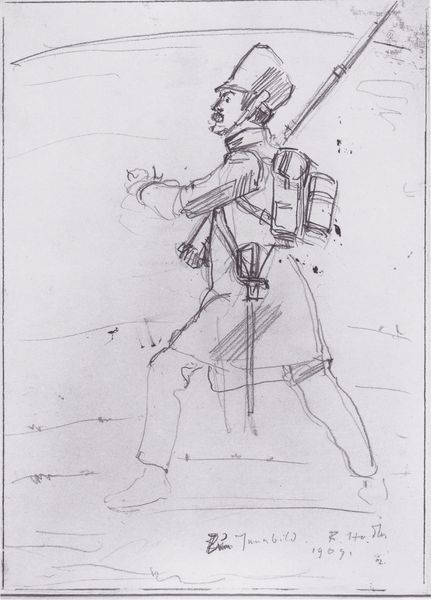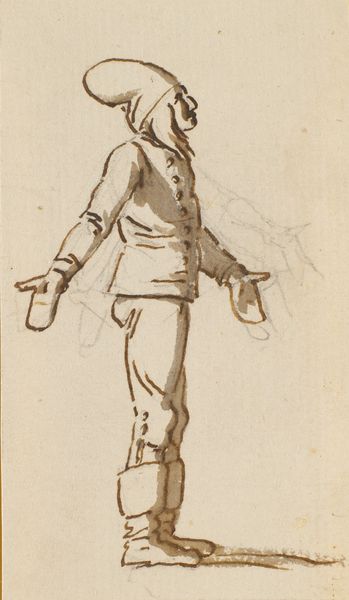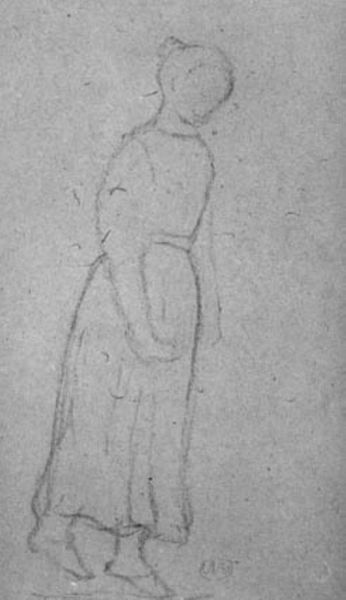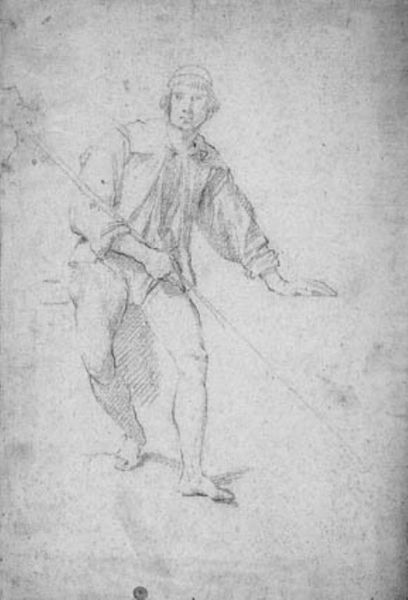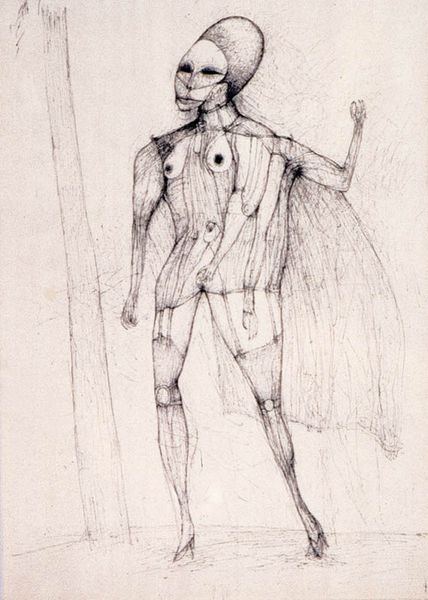
Study for "The Surrender of the Dutch Admiral De Winter to Admiral Duncan, October 11, 1797": Lord Admiral Duncan 1798
0:00
0:00
#
portrait
#
amateur sketch
#
thin stroke sketch
#
pencil sketch
#
sketched
#
incomplete sketchy
#
idea generation sketch
#
sketchwork
#
detailed observational sketch
#
rough sketch
#
men
#
sword
#
initial sketch
Dimensions: 12 3/16 x 6 3/4 in. (31 x 17.1 cm)
Copyright: Public Domain
John Singleton Copley sketched this study of Lord Admiral Duncan, likely in the late 18th century, using graphite on paper. Observe the admiral’s outstretched hand, a gesture laden with authority, yet also of offering. Across time, this motif echoes in various contexts: from Roman emperors granting clemency to vanquished foes, to Christ extending his hand in blessing. It signifies power, control, and even a form of magnanimity, hinting at the complex dynamic between victor and defeated. The sword held loosely in the other hand is another symbol here, carried from ancient times to modern warfare. The sword, once a straightforward symbol of physical prowess, becomes a symbol of justice, honor, and sacrifice. These symbols create a visual language, charged with the weight of history and embedded in our collective subconscious. Each gesture is a complex convergence of past and present, engaging our emotions on a visceral level. The motifs reappear across the ages, shifting in emphasis, yet still resonating.
Comments
No comments
Be the first to comment and join the conversation on the ultimate creative platform.
